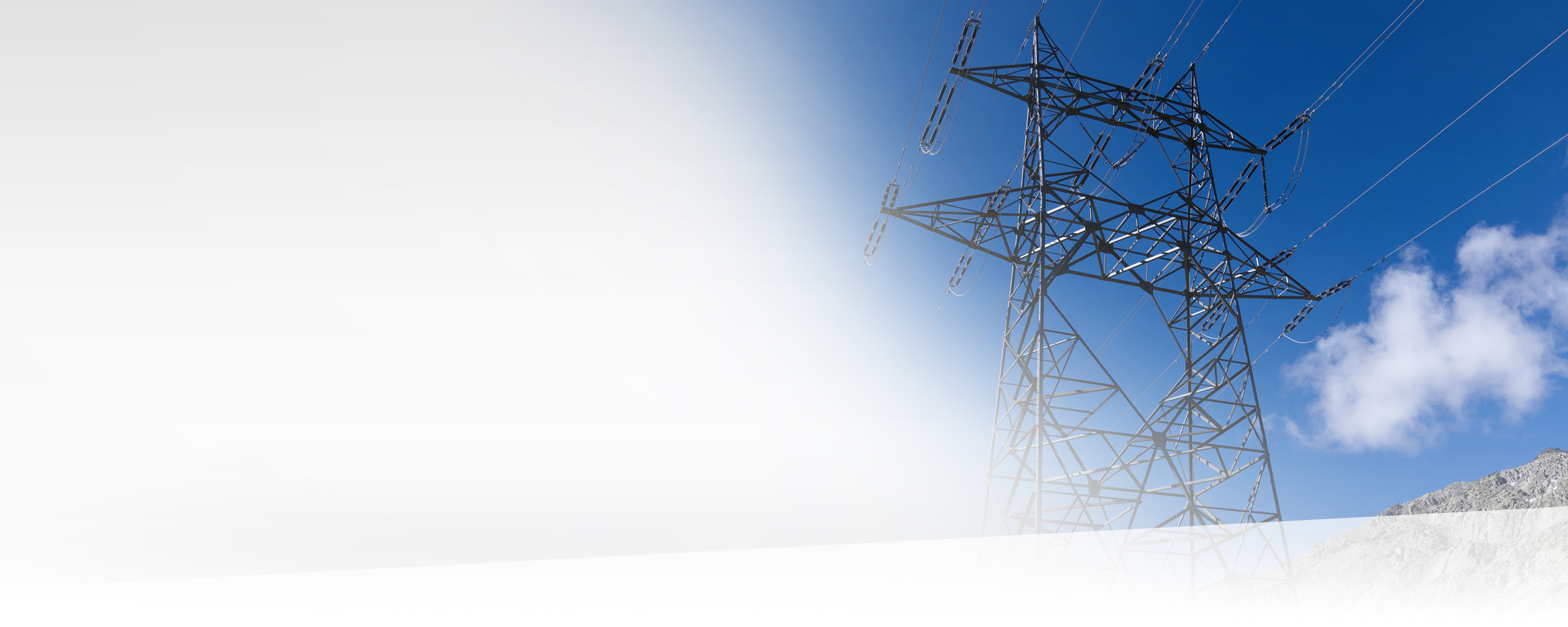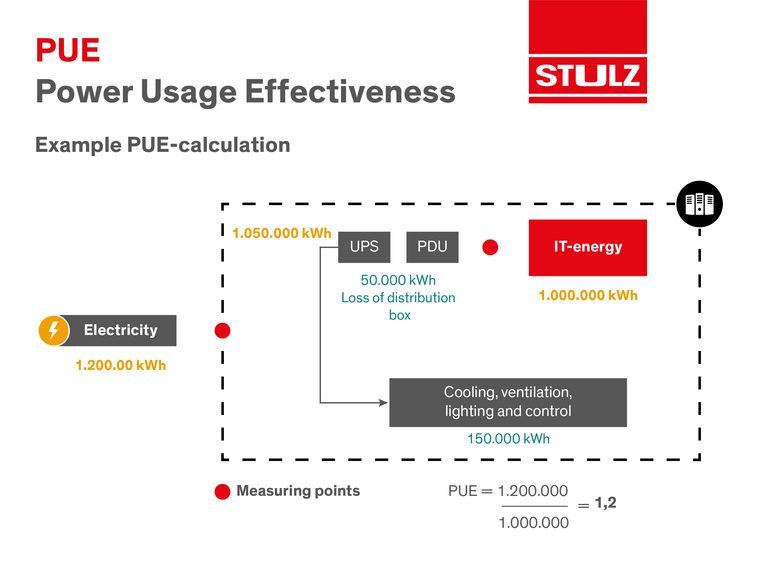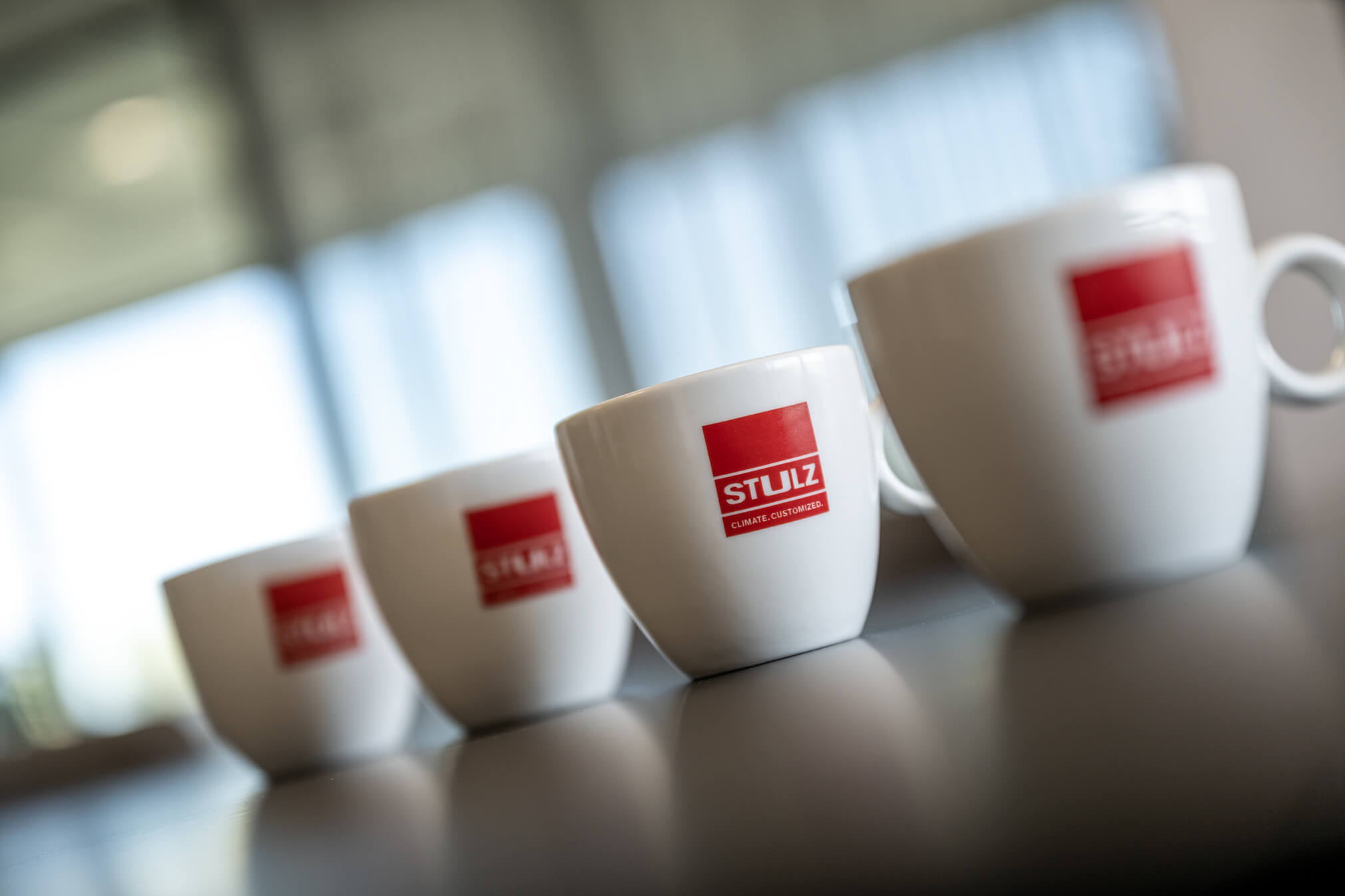PUE - STULZ answers

Perhaps the most common term in the data centre industry: Power Usage Effectiveness (PUE). Data centre infrastructure and the computing power of machines demand a great deal of energy. The more efficient a data centre is, the less power and fewer costs go to peripheral equipment. PUE must be monitored to benchmark the efficiency of a data centre. Organisations and data centre managers use PUE to measure their data centre’s efficiency and to get a clear picture of how such efficiency is changing as infrastructure or equipment changes. This helps to reduce power consumption and energy costs. The lower the PUE, the more efficient the data centre, with an ideal but practically impossible value of 1.0.
Calculating Power Usage Effectiveness
The PUE is determined by dividing the total amount of power entering a data centre by the power used to operate the IT equipment in the data centre. Total power consumption is the amount of power the data centre uses, including all hardware, power supply components, cooling systems and lighting systems (let's say, shown on the energy meter). Energy for IT equipment refers to the amount of energy used to provide power to the storage and network equipment as well as the operating equipment such as monitors and workstations. To improve the data centre’s efficiency, it is important to set up these elements in a different, more economical way, for example using cooling from water or air from the building's environment.
PUE= Ptotal DC / PIT
PUE is expressed as a ratio as shown above, in which the overall efficiency increases as the total reduces to 1.0.

Data centre energy efficiency
The better the data centre’s energy efficiency, the less it costs. So, it is important to take factors into account that reduce PUE.
Steps you can take to bring an effectiveness ratio closer to 1.0 include the following:
Switch to virtual servers/machines (VMs). Virtual machines can run multiple workloads, reducing power consumption and freeing up more space for other systems.
Improve cooling systems. To prevent overheating, data centres need a cooling system. Cooling systems based on refrigerants, however, consume a lot of power. By improving these systems or making the data centre less dependent on them, the PUE can be reduced (e.g. direct or indirect fresh air cooling).
Optimise cooling air supply. This can be done, for example, by using natural cool outside air or heat exchangers.
Replace inefficient hardware. The quality and performance of some hardware may decline over time, so if servers or storage systems are not performing well, STULZ recommends having them replaced.
Use an energy efficient uninterruptible power supply (UPS). Power distribution must be designed with a UPS to be more efficient. More efficient equipment and operating power over a shorter distance, increases efficiency.
Use energy-efficient lighting. Although lighting generally consumes a smaller portion of the power, it is an easy way to reduce the power and heat production. Replacing fluorescent lighting with LEDs with motion sensors and lighting controllers can help reduce power consumption and heat production.

Be the first one to receive new articles?
Sign up for our newsletter via this link.
